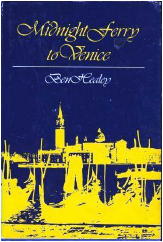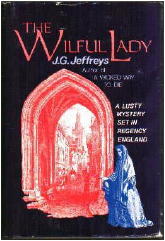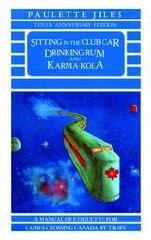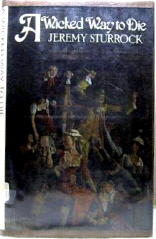I’ve been working with Part 9 yesterday and today, this time more or less in the A’s, but things quickly branched out from there:
ADAMS, FRANK R(AMSEY). 1883-1963. Chicago reporter; writer of songs and screen plays. Also the author of eight mystery and adventure novels included in the (Revised) Crime Fiction IV, two marginally. One of these was reprinted in paperback by Dell in 1950 as western fiction; see below. One other book by Adams was purely a western: Gunsight Ranch (Doubleday Doran, hc, 1939).
Arizona Feud. Doubleday Doran, US, hc, 1941. Harrap, UK, 1944. “The homecoming of a young Arizonian revives a blood feud three generations old.”
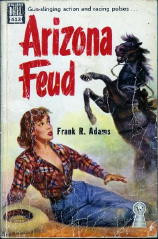
ANDREAE, PERCY. 1858-1924. Confirm birth date and add date of death. Influential anti-prohibitionist in the US in the 1900s. Between 1894 and 1902, the author of five novels included in the (Revised) Crime Fiction IV, including the two below. Two of the other titles are indicated as being only marginally crime-related.
Stanhope of Chester. Smith Elder, UK, hc, 1894. Rand McNally, US, pb, 1896. The Bookman (Vol. III, No. 1, March 1896): “The most notable ghost story that has appeared for many years.”
The Vanished Emperor. Ward Lock, UK, hc, 1896. Rand McNally, US, 1896. Alternate history novel set in Europe. “Sir John Templeton solves the case of the missing German emperor.”
ANDREWS, CAROLYN. Pseudonym of Carolyn Hanlon, 1940- , q.v. Add real name and year of birth. Under this pen name, a writer of romance fiction, with one title included in the (Revised) Crime Fiction IV. See below. [Other pen name: Cara Summers; not used for criminous fiction before the year 2000.]
The Marriage Curse. Harlequin, pb, 1996. [A lovely innkeeper determined to solve the mystery surrounding her resident ghost clashes with her overly solicitous landlord.]
ARCHER, MARGARET. Author of six crime novels listed in the (Revised) Crime Fiction IV, including the two below. Published in the UK between 1945 and 1953, none appeared in the US.
Gull Yard. Jarrolds, UK, hc, 1947. [Nellie Greene, the new governess to the Rev. Arthur Cagg’s household, arrives in London’s Gull Yard during early Victorian times.]
The Silent Sisters. Jarrolds, UK, hc, 1950. Add setting: England.
ARMSTRONG, RAYMOND. Pseudonym of Norman (Harold) Lee, 1898-1964, q.v. Under this pen name, the author of 13 mystery novels included in the (Revised) Crime Fiction IV, all published only in the UK between 1947. The series characters who appeared in these books include J. Rockingham Stone, Inspector Dick Mason, and Laura Scudamore, sometimes individually and on occasion, all three in the same books. It must be Laura Scudamore who is known as “The Sinister Widow,” as the phrase is part of the title in all seven books in which she appears.
ARNOLD, JUDITH. Pseudonym of Barbara J. Keiler, 1953- , q. v. Add real name and year of birth. Lives in a small town near Boston. Under this pen name, a writer of romance fiction with two titles in the (Revised) Crime Fiction IV, one marginally. See below. [Other pen names: Ariel Berk, Thea Frederick; neither was used for criminous fiction through the year 2000.]
-Legacy of Secrets. Harlequin, pb, 1998. Setting: Louisiana. [Book 11 in the Delta Justice series.]
A Stranger’s Baby. Harlequin, pb, 1996. Setting: Maryland.
CORRIGAN, MARK. Pseudonym of Norman (Harold) Lee, 1898-1964, q.v. Under this pen name, described online as the author of “30 mystery/detective novels with series character Mark Corrigan of US Intelligence who, with sidekick Tucker Maclean, has first-person romantic adventure thriller experiences in exotic locations.” Two of these are shown below.
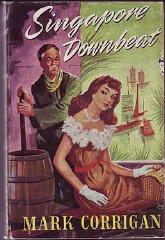
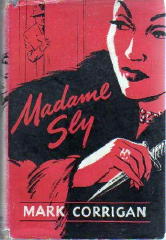
HANLON, CAROLYN. 1940- . Pseudonym: Carolyn Andrews, q.v. Add this entry with the author’s real name and year of birth. [Other pen name: Cara Summers; not used for any criminous fiction before the year 2000.]
HOBART, ROBERTSON. Pseudonym of Norman (Harold) Lee, 1898-1964, q.v. Under this pen name, the author of four mystery novels included in the (Revised) Crime Fiction IV. Series character Inspector Grant Vickary appears in two of them; the setting for each is Australia. One of these is shown below:
KEILER, BARBARA J. 1953- . Pseudonym: Judith Arnold, q.v. Add this entry with the author’s real name and year of birth. [Other pen names: Ariel Berk, Thea Frederick; neither was used for criminous fiction through the year 2000.]
LEE, NORMAN (HAROLD). 1898-1964. Correction of dates & addition of middle name. Add as pseudonyms: Raymond Armstrong, Mark Corrigan, Robertson Hobart, qq.v. Also add the titles indicated with a (*) below. The following is now the complete entry in the (Revised) Crime Fiction IV for the author under his own name. (Others novels appear to be adventure or sea stories only.)
-Deputy Wife. Mitre, UK, pb, 1946.
The “Four Winds” Mystery. Mitre, UK, pb, 1946.
Peril at Journey’s End. Foster, UK, pb, 1947.
(*) Ship of Adventure. Skilton, UK, 1948. Setting: Ship.
(*) The Terrified Village. Lutterworth, UK, hc, 1947. Setting: England, 1800s. Subtitle: A Tale of the Kent and Sussex Smugglers. [Historical tale based on the exploits of the Zack o’Lantern gang, in which the son of a London lawyer falls in with smugglers.]
LEE, NORMAN. 1905-1962. Delete this entry. This eliminates an apparent second Norman Lee whose presumed pseudonyms are now correctly attributed in the entry above.



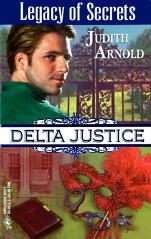


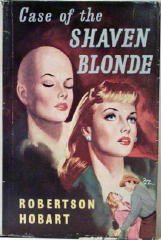



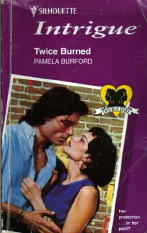
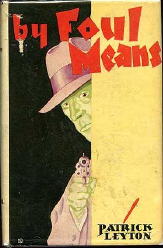
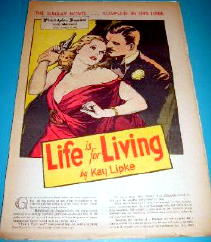

 How silent is the night — how clear and bright!
How silent is the night — how clear and bright! The year The Bride Wore Black first came out is commonly considered the year when film noir came into being. But the more movies I see from the years immediately preceding 1940, the more I tend to question that consensus. Turner Classic Movies recently and for the first time ran
The year The Bride Wore Black first came out is commonly considered the year when film noir came into being. But the more movies I see from the years immediately preceding 1940, the more I tend to question that consensus. Turner Classic Movies recently and for the first time ran  Devotees of films noir and their fictional sources will want to check out Kevin Johnson’s
Devotees of films noir and their fictional sources will want to check out Kevin Johnson’s  His fourth EQMM original, “Tyger! Tyger!” (October 1952), is perhaps the finest short crime story to deal centrally with poets and poetry. Malcolm Ridge, struggling to express his feelings about the Atomic Age, becomes prime suspect in the murder of the owner of a Russian restaurant in Greenwich Village and uses his skills as a poet not only to clear himself and identify the real killer but also to use the experience in conjuring up the exact words his poem-in-progress needed.
His fourth EQMM original, “Tyger! Tyger!” (October 1952), is perhaps the finest short crime story to deal centrally with poets and poetry. Malcolm Ridge, struggling to express his feelings about the Atomic Age, becomes prime suspect in the murder of the owner of a Russian restaurant in Greenwich Village and uses his skills as a poet not only to clear himself and identify the real killer but also to use the experience in conjuring up the exact words his poem-in-progress needed. 
